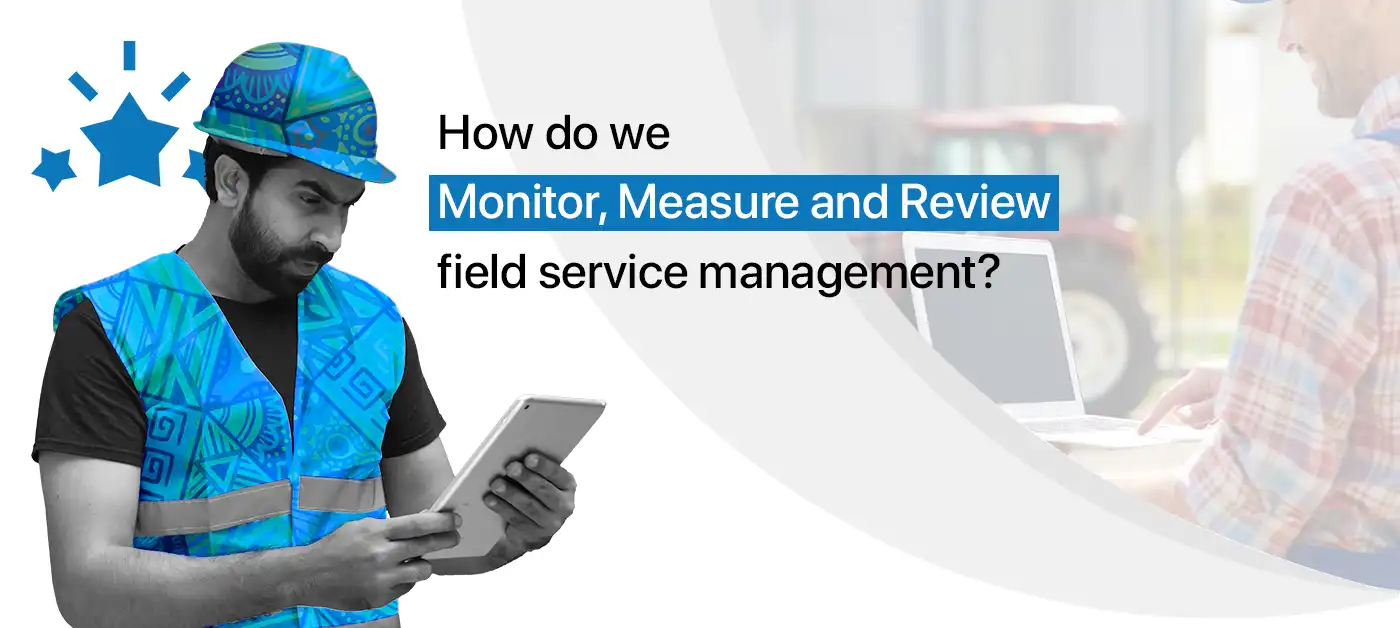Tools for field service management are essential for creating a successful company, especially in times when customers demand quick field service management and one negative review might bring down a whole company. Every industry is competing to offer the greatest field management. In fact, according to a Bain and Company analysis, a 5% improvement in client retention rates may boost profitability by up to 95%. However, it is not only the role of the customer service division to deliver outstanding front-end experiences that promote brand loyalty.
In order to provide exceptional service, a successful firm leverages the strength of its whole team, technology, and procedures. Tools for field service management are useful in this situation. By incorporating all teams and departments, they enhance cooperation and add much-needed transparency to procedures. Despite the fact that IT is at the center of field management strategy, it extends to include all facets of the business. When integrated, they improve accountability, standardize processes, and boost productivity.
Together with enhanced automation and AI/ML capabilities, contemporary field service management technologies provide products tailored to individual departments and job functions. When cases are automated, they are automatically routed according to the user’s needs and the agent’s area of competence, and then intelligent processes take over. They can quickly and easily walk even a brand-new worker through a procedure, speeding up ticket processing.
Risk Reduction
A company must first be in charge of a well-run field management infrastructure in order to deliver a smooth service. Starting with ongoing IT infrastructure monitoring, this may assist anticipate or identify any possible risk occurrences. Risk events might include everything from a misplaced phone to a hacker attempt. By putting in place the appropriate processes, the company may reduce the risk without compromising service. In the event of preventable but predictable dangers, the organization may arm itself with the appropriate employees and resources through constant monitoring to prevent field management interruption.
Tracking important metrics
Measuring the impact of field service automation is challenging due to its broad scope. Customer satisfaction ratings, average response times, availability of service, average resolution times, cost per ticket, and first-contact resolution rates are examples of traditional key performance metrics. Businesses may prioritize resources, predict trends, find areas for development, and get rid of typical bottlenecks before they have an impact on field service automation by taking a comprehensive approach to KPIs. Nowadays, many platforms have built-in data analytics solutions that provide stakeholders with information on crucial KPIs. This reduces the need for several third-party programmes and streamlines data access and storage.
Review of Services
A field service automation review is a necessary component of any effort to improve. Businesses must first choose the appropriate criteria, such as performance, validity, and expenses incurred per service, to gauge the effectiveness of their tools and strategies before conducting a service review. To ensure that the IT infrastructure is in line with the roadmap, the field staff management team must be involved in discussions on business goals. The effectiveness of the review can also be impacted by putting together the appropriate team with the appropriate tools. In addition to allocating opportune moments for the crew to perform and prepare their assessment, the company must decide how frequently reviews are necessary. It takes time for the company to implement suggestions like improvements, which might impede the smooth running of service.
Managed Services Providers: Professional Assistance For A Higher ROI
Although necessary, the assessment process can add up in costs and seriously impair operations. It is simply not practical or cost-effective to have a dedicated crew to track and evaluate service quality. These tasks are made simpler by a managed services provider, allowing the company to concentrate on its main line of business. Businesses may reduce their support expenses by at least 30% by using the overseas model for these critical tasks. Simply simply, working with a managed services provider guarantees top-notch services without breaking the bank.
The most crucial and challenging stage when switching to the overseas model may be choosing a partner. Businesses may reduce operational expenses and get access to a bigger pool of expertise by enlisting the right partner. Choosing that partner is more difficult stated than done; value, dependability, and quality of work are most important. The managed services company must thoroughly comprehend the business strategy in order to provide an effective plan for IT support that maximizes ROI.
What a Good Partner Can Deliver
An expert field staff management services provider can grow and customize an organization’s IT infrastructure to meet its operational objectives. They suggest areas where automation could be expanded in order to eliminate mistakes caused by human operations and raise service quality. According to studies, manual testing is at blame for 90% of any and all IT project delays. For instance, by minimizing human involvement, automated testing speeds up the software delivery lifecycle. Additionally, low-code/no-code technologies enable non-professional developers to create user-friendly apps for a third of the price with flexibility for future updates and improvements.
The main benefit a company experiences from a managed services provider is an efficient IT infrastructure. The day-to-day operations that make up good service management are handled by an effective and intelligent platform, allowing the company to concentrate on innovation.






